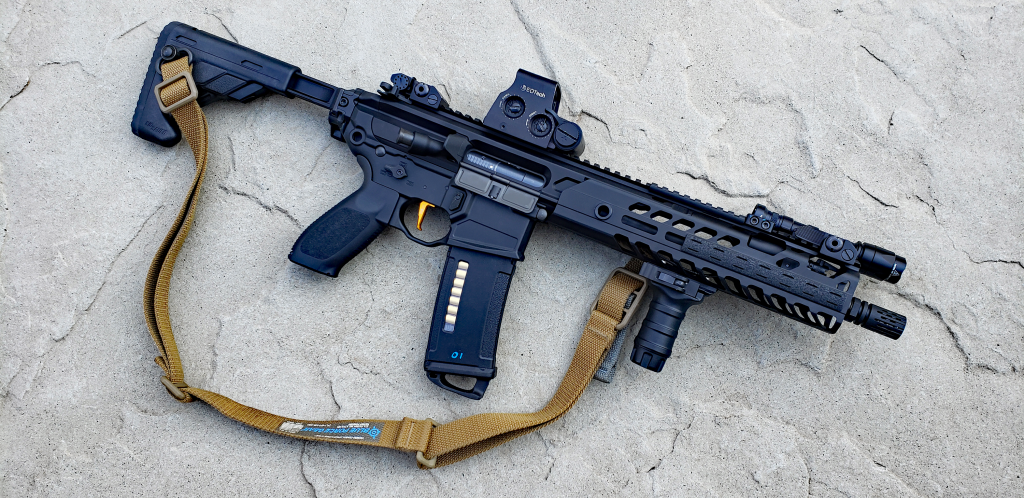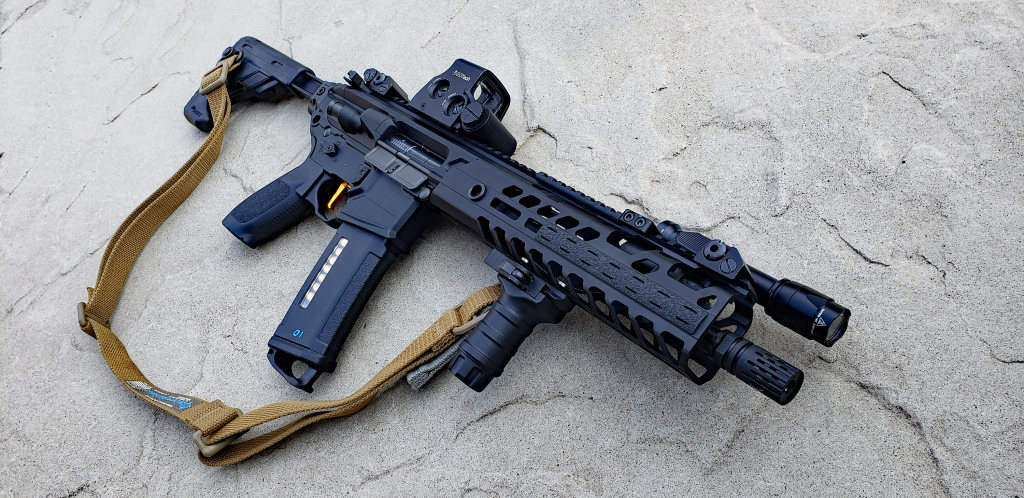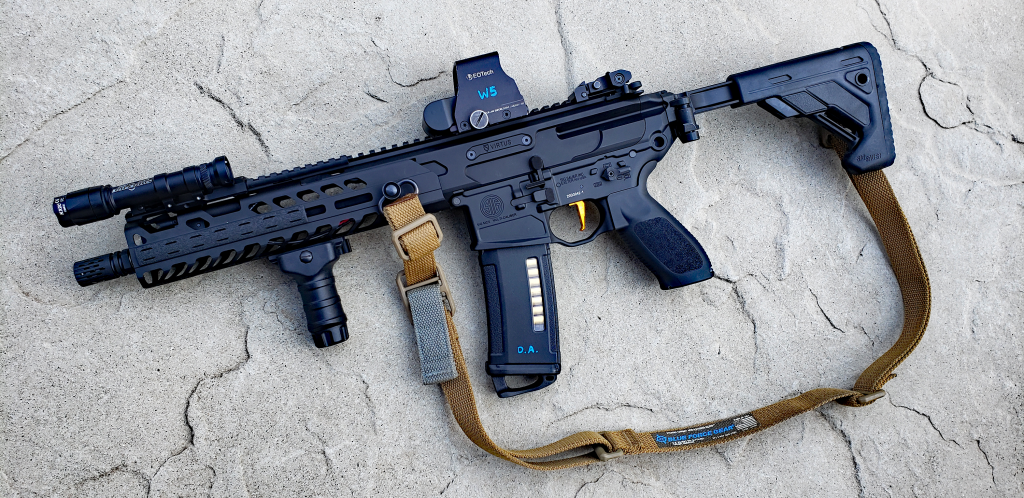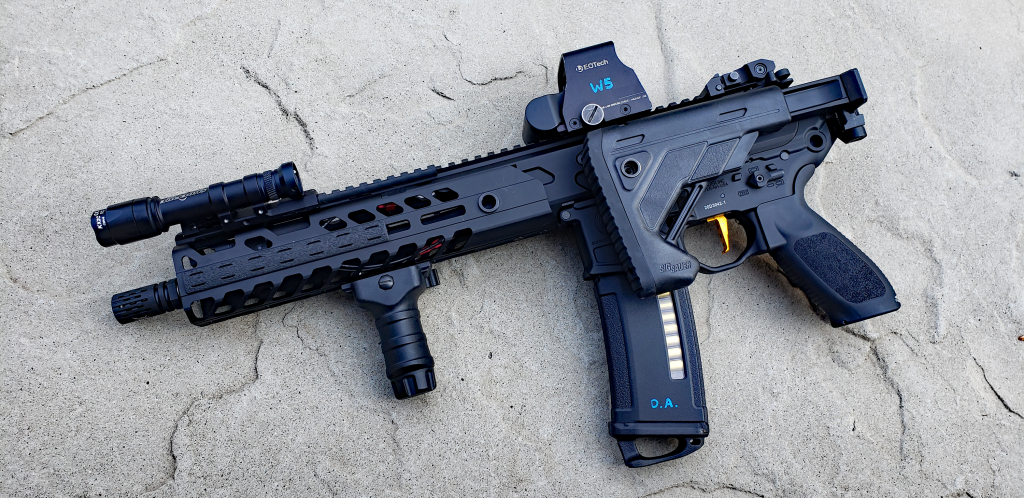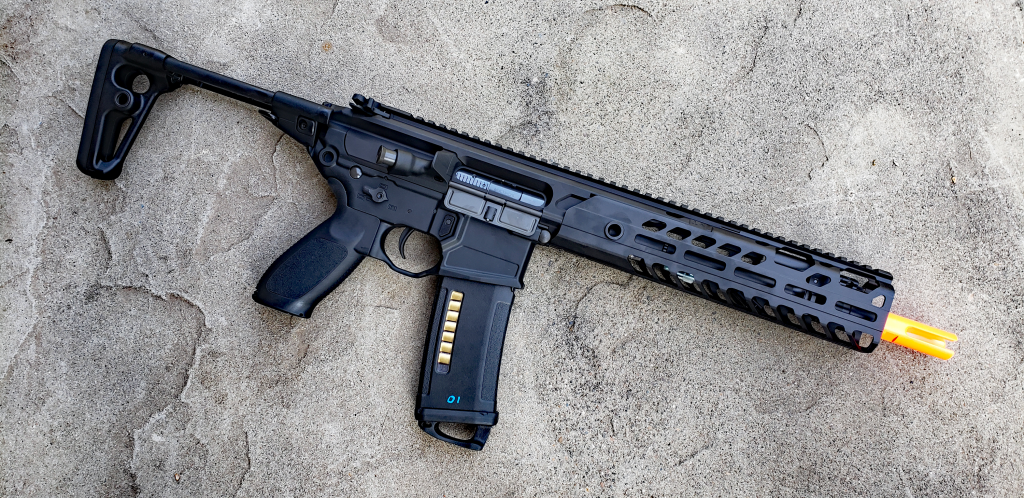
Lately I’ve found myself a bit taken with the SIG MCX rifle. It’s just different enough to not be another boring M4 and also isn’t the usual stand-in that the HK416 has become for guys trying to be a bit different, but still keeping it in the wheelhouse of the M4 style platform. It is still new enough to the market that you don’t see that many of them around either; in the states at least, it hasn’t appeared to take off in popularity as it has in Europe. Being largely based on Ver. 2 components, it has a lot of potential with regard to upgrades. The MCX will also take a number of real steel accessories such as stocks and rails, in addition to the usual optics, lasers and flashlights.
As with most of my personal builds, one of the secondary goals here was to see how much weight could be shaved off the rifle without resorting to more exotic methods. The base MCX weighs 6.02 lbs without a magazine, which honestly isn’t that bad. After upgrading, I only ended up reducing it to 5 lbs 14 oz. – or a mere 4 oz savings, basically. Certainly not as dramatic as my Seekins Precision build, which trimmed over 5 lbs off the rifle (I later dropped it to 4.09 lbs). But again, the transformation of this rifle was mainly internal, so I wasn’t expecting much in the weight loss department.
Externally, I’ve opted to retain the stock rail, which I find to be relatively comfortable. There are some aftermarket options available, including several real steel SIG variants and setups offered by Midwest Industries and Lancer. But as I am presently not running a recessed can, the stock rail is more than sufficient for my purposes presently.
The ugly orange flash hider was quick to go; although it wasn’t quick to remove as it was affixed horrifically tight with red thread locker. It took a judicious amount of heat from a propane torch to get it to soften up enough to be cranked off. I’ve replaced this with the lighter-weight PTS Battlecomp 2.0 muzzle device.
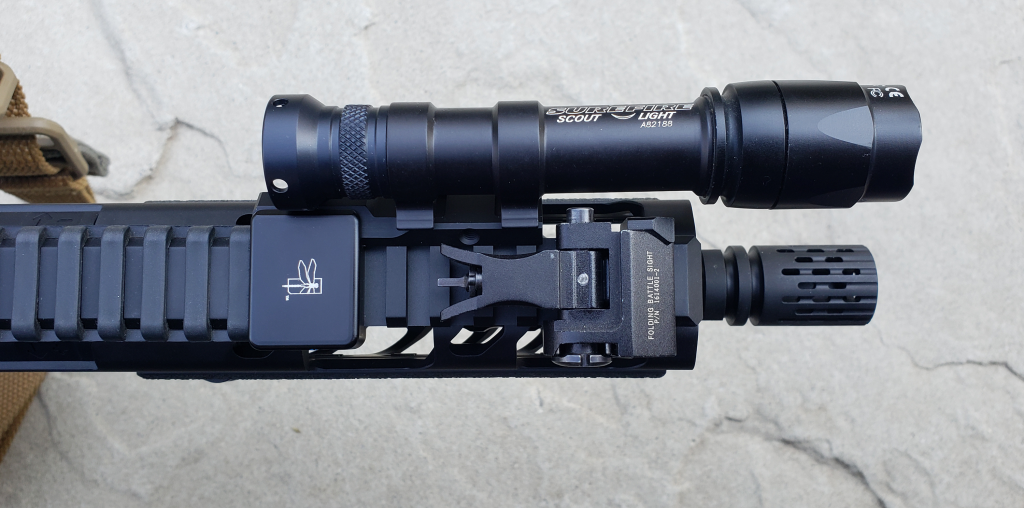
I also opted to change out the buttstock assembly. The one that comes with the MCX Virtus is a retractable affair that – while not awful – doesn’t feel amazing either. Unlike the classic MP5 A3 retractable stock, the one that comes with the MCX feels uncomfortably wide. Fortunately (and maybe unfortunately), real steel stocks will fit this rifle. I say unfortunate, because it means there are not any inexpensive Airsoft repro’s of said stocks presently available. Whether this was a savvy marketing decision on the part of SIG to push customers into purchasing expensive real steel accessories or a matter of supreme oversight remains a matter of debate.
Of any part of this build that was difficult to find, the stock proved to be to the hardest part to track down. Due to the current climate of perpetual election-cycle driven “Gunpocalypse” that we find ourselves in, stocks of stocks (pun?) have been sitting high and dry for quite some time now. I finally found one available from a reseller in Florida buried about 60 Google links in.
In addition to being narrower in width, this stock offers more adjustment positions than the original version and folds to the left side of the receiver, resulting in a slightly shorter overall length.
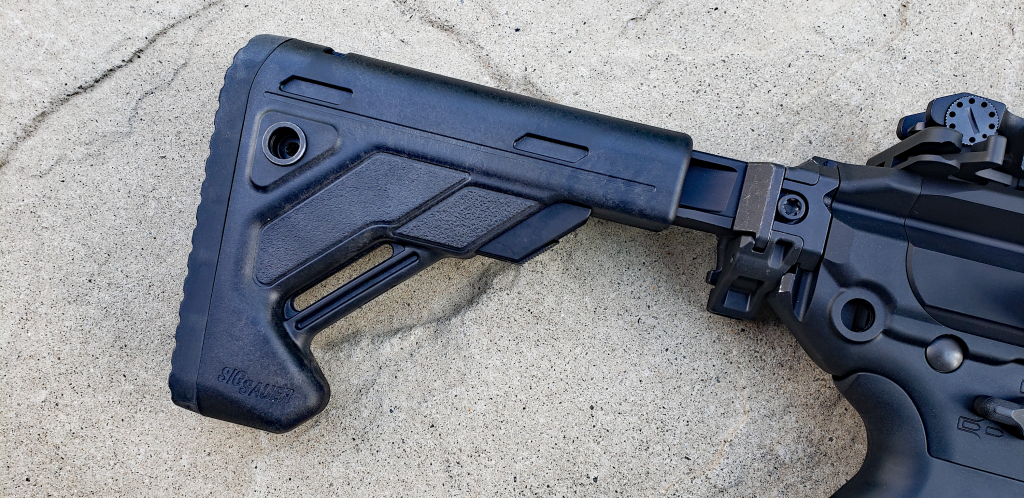
The second part that was hard to find was the Retro Arms VFC spec gearbox. For some reason Retro Arms only rolls off a small handful of these shells and they typically sell out within a week or less. So when they come available you have to be ready to jump on that “Add to Cart” button. For any VFC spec rifle that uses the Avalon series ambidextrous selector switch, this is the gearbox you want though, as the standard QCS setup is not compatible.
As I had opted to use the Retro Arms shell as the base for the gearbox build, I ended up not even using anything from the stock gearbox except for the selector plate and fake bolt cover catch. This specific selector plate is necessary for use with the VFC’s ambidextrous selector switch assembly as a conventional Ver. 2 plate is not readily compatible.
On the Retro Arms gearbox, I’ve installed a set of 8mm FLT bushings as the foundation for some Siegeteks. These were a beast to install as they were a very tight fit. Next up: some short stroked Siegetek 14.09:1’s shimmed to an ASG 22 TPA motor. On the compression side I’ve used the excellent VFC Ver. 2 air nozzle, a Guarder stainless steel double o-ring cylinder head, Lonex POM piston head and the Angel Custom KRATOS piston. AOE was done via a 3/16″ 70D gen. 2 AirPad.
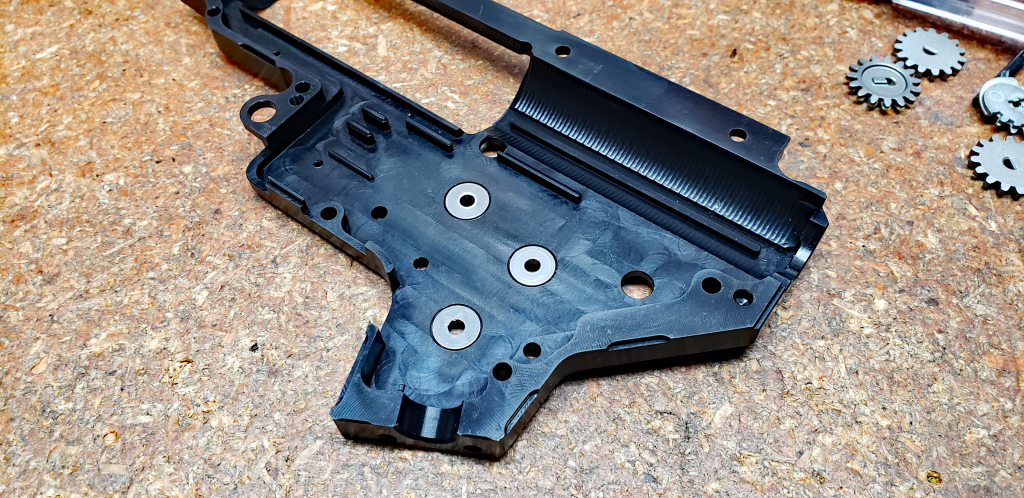
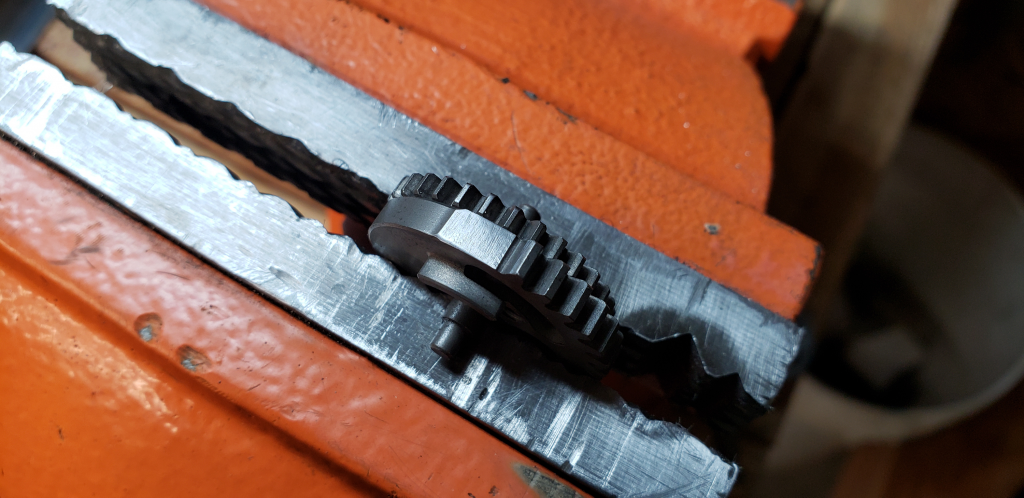
Naturally, a front-wired Gate TITAN is a requisite, along with a shiny gold MAXX CNC tuneable flat trigger for nice and short trigger pulls.
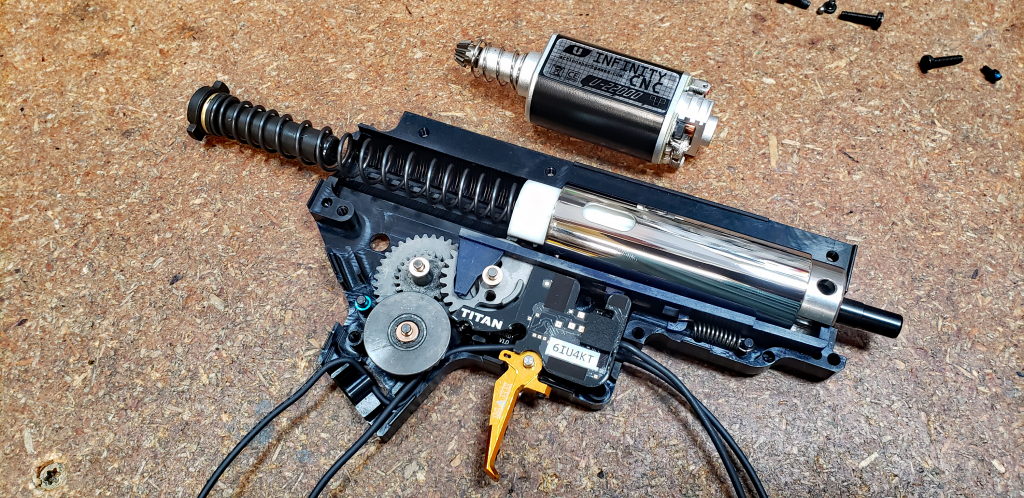
I had briefly considered modifying the gearbox shell to allow the use of the rear QD socket on the receiver. In stock form, whether it’s the VFC shell or otherwise, you can’t insert a QD swivel into this socket. Matrix (OEM’d by some Chinese company) makes a stubby-shafted QD socket that reputedly fits, but I don’t trust any gun to replica QD swivels. In any case, it’s not a hard modification, but after experimenting around a bit I decided I wouldn’t like running a sling off of that point to begin with. So I left it alone.
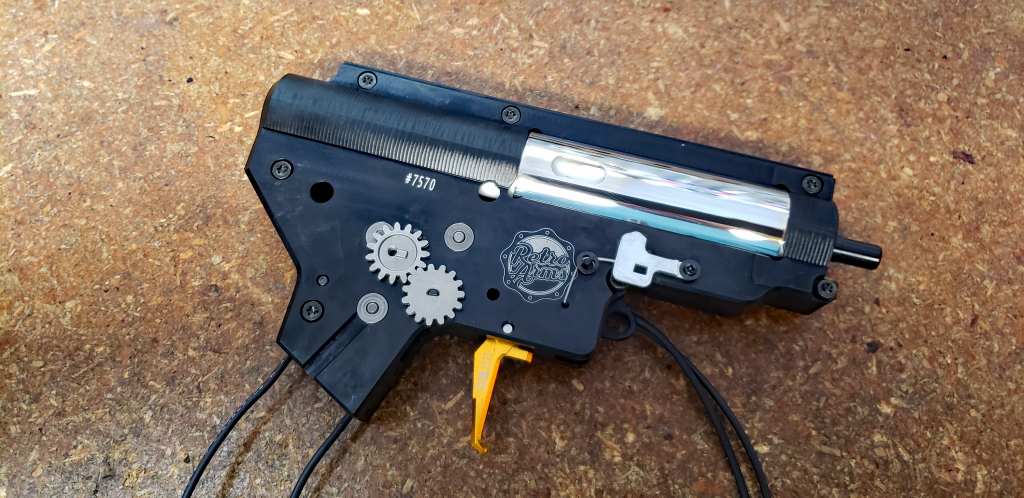
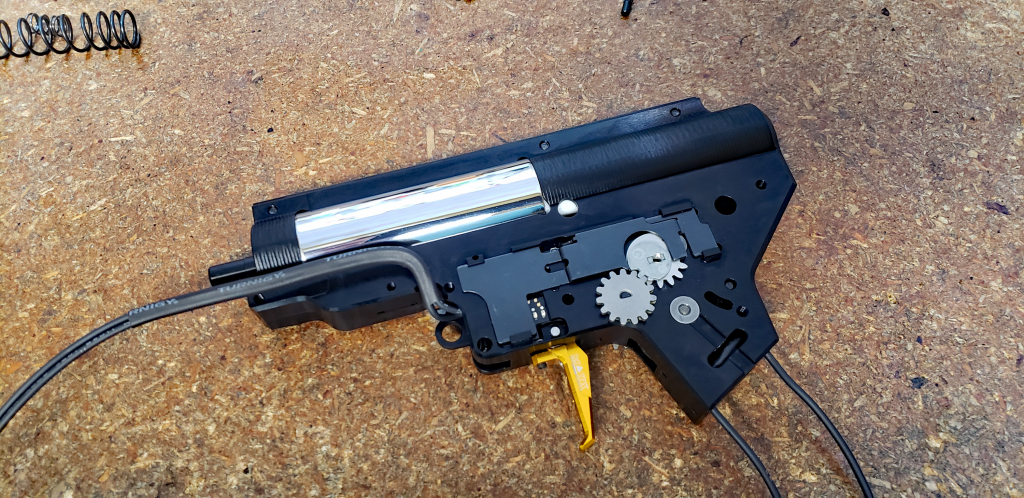
The Retro Arms gearbox fits supremely well into the MCX. The one thing of note, however, is the VFC quick-change spring guide for the MCX is not compatible with the Retro Arms gearbox. Technically you can use the spring guide that comes with the Retro Arms box, but the issue arises of spring guide tilt since it’s not secured in any fashion by a retainer screw. Normally in lieu of a buffer tube assembly that screws into the guide, I would counter this with a nice fender washer and backer screw to keep the guide straight and prevent tilt. But here I wanted to retain the ability to pull the spring guide without having to pull the gearbox shell out either. Using a backer and screw would have prevented that from being a possibility. Further, some modification of the interior of the receiver would need to be done to accommodate that as well.
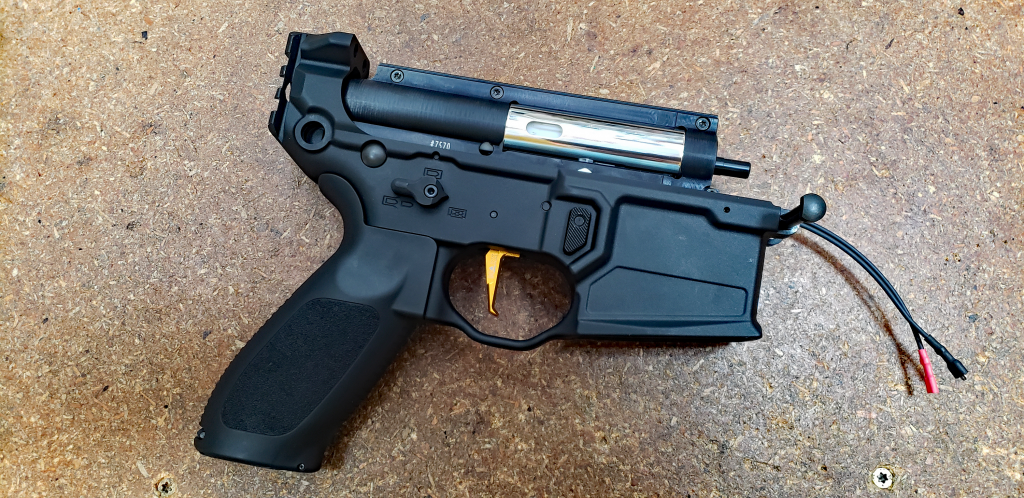
Instead, I opted to do a fusion of the Retro Arms spring guide and the VFC guide. On the VFC guide, I shortened it up, just past the locking lugs and drilled a hole for an M5 screw and a smaller hole through the back of the guide to allow for tightening the screw. About 4mm of length on the end of the guide was also turned down in diameter to approximately match the diameter of the Retro Arms guide so it would slide into the shell when things are inserted and rotated. This was then affixed to the Retro Arms guide with some red loctite to ensure things do not ever come apart. All-in-all this setup came out a lot better than I anticipated and simultaneously solves the quick-change spring capability and guide-tilt issue at once.
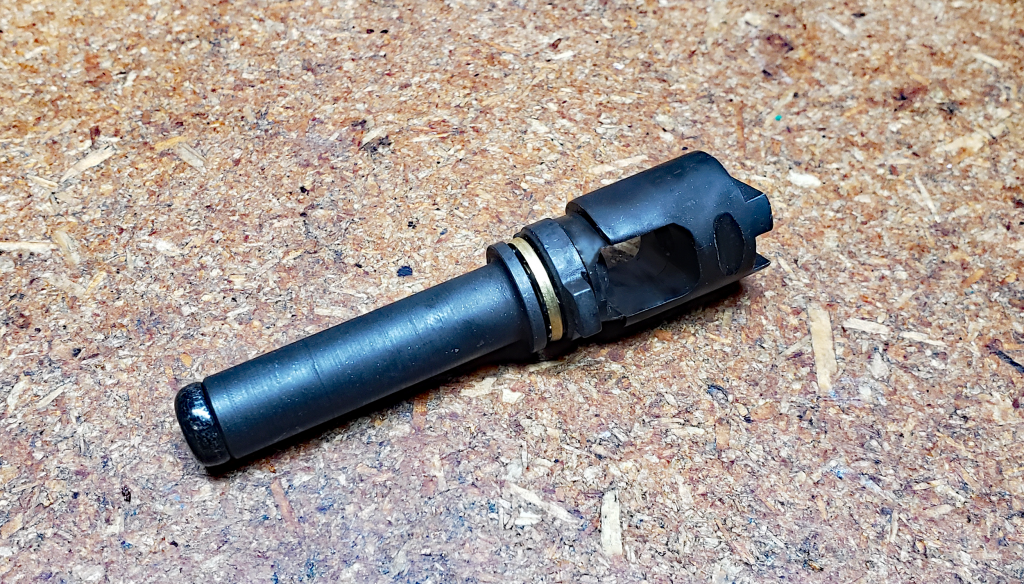
Getting near to finished now! On the accuracy side, a 303mm stainless steel Lambda One barrel was installed with an R-Hop and flat hopped Prometheus purple bucking. I opted to go with the MAXX ME Sport rotary hop up chamber over the Pro as I’m not really a big fan of the BB release latch on the Pro version.
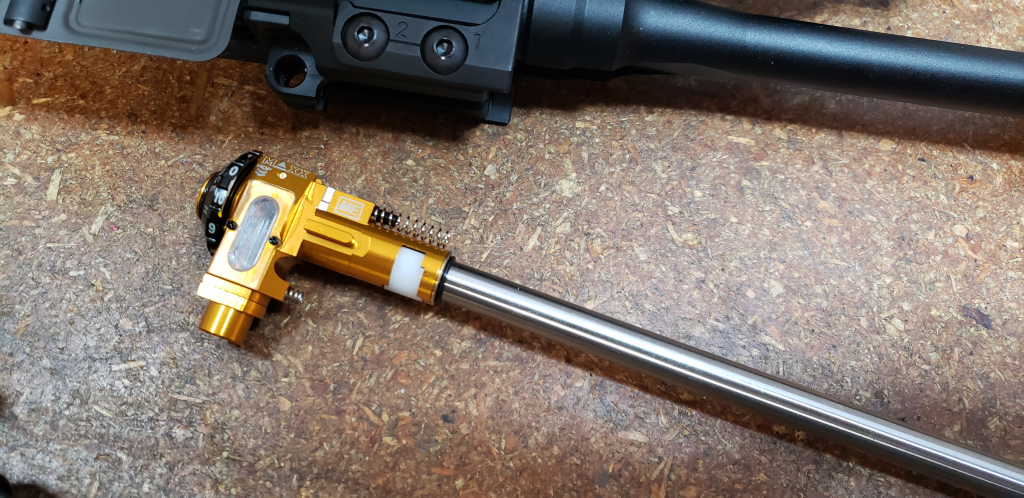
With these changes I’m averaging a decently tight FPS variance:
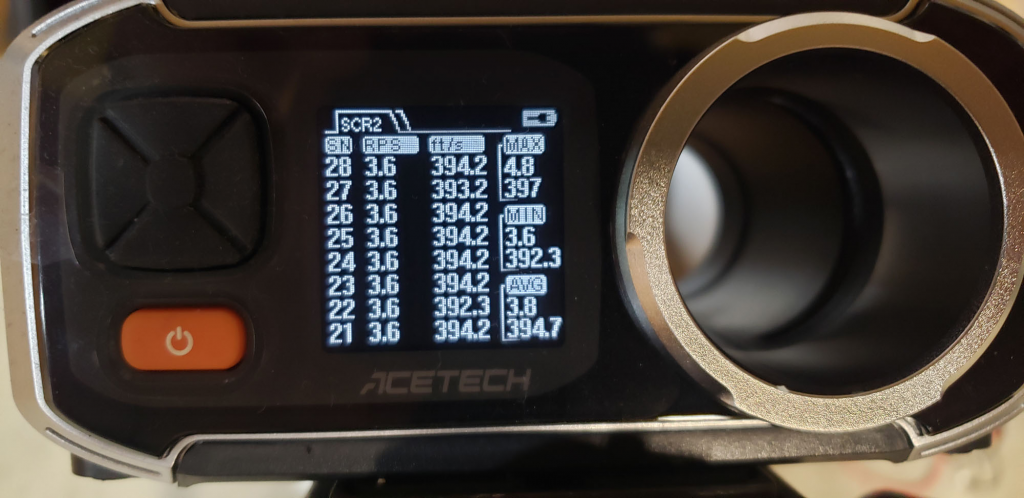
The final bit was to add some hook-side industrial grade adhesive velcro to the inside of the magwell on both sides to eliminate mag wobble with my PTS EPM’s. Like a lot of current VFC’s, it seems they took the suggestion of “opening up the magwell” a bit too far and now it’s like throwing a hotdog down a hallway with these things.
I’m normally remiss to say “it’s finished!” because we all know they never truly are. I can see maybe adding in the Virtus Training System 6.75″ barrel assembly down the road and a can and suppressor compliant rail. I can also see getting it done up in SIG Elite Concrete Cerakote too. But for now, it’s – temporarily – done at least and I can hang this one up on the wall.
External Specifications:
- VFC MCX Virtus
- PTS Battlecomp 2.0
- Troy style Battlesights
- EOTech XPS3
- Haley Strategic Thorntail
- Surefire Scout weaponlight
- BCM rail panel covers
- Tango Down stubby vertical grip
- SIG telescoping / folding stock
- Blue Force Gear VCAS sling
Internal Specifications:
- Lambda One 6.01 stainless steel barrel
- R-Hop
- Prometheus purple bucking
- MAXX ME Sport CNC rotary hop up chamber
- Retro Arms CNC 8mm QCS gearbox
- VFC Ver.2 o-ring air nozzle
- Guarder stainless steel double o-ring cylinder head
- Guarder super-lucid chromium plated cylinder
- 3/16″ 70d Gen. 2 AirPad
- Lonex POM piston head
- Angel Custom KRATOS piston
- ASG Ultimate tappet plate
- Gate TITAN, front wired
- MAXX CNC tuneable flat trigger
- Siegetek 14.09:1 gearset, SS
- Lonex anti-reversal latch
- FLT 8mm bushings
- Guarder SP110 spring
- ASG U-22000 motor
- Modified Retro Arms / VFC spring guide
